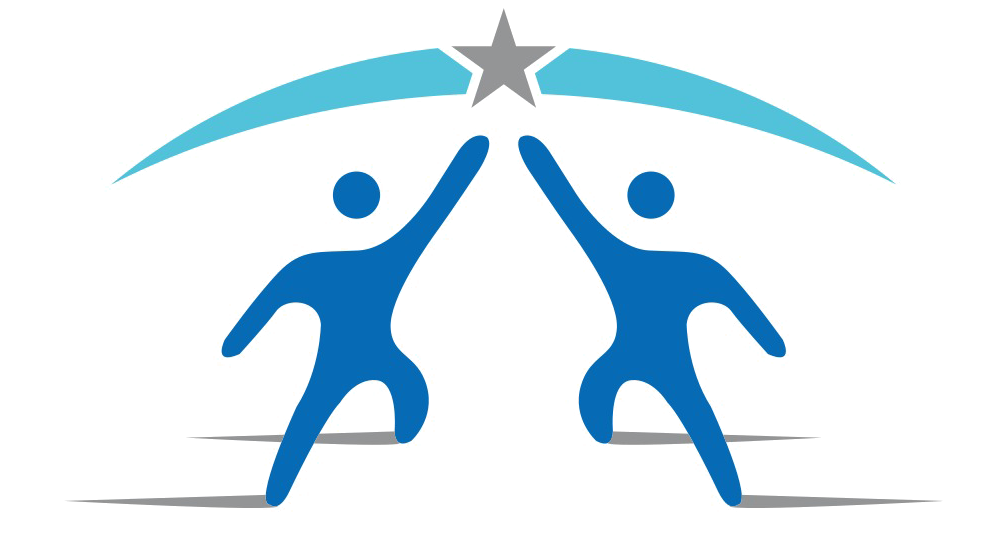Gratitude is the active recognition and expression of appreciation for people, opportunities, and small daily experiences, and when paired with consistent mentorship it becomes a developmental tool that strengthens emotional, social, and academic outcomes for adolescents. This guide explains why gratitude matters in youth development, how mentors can intentionally cultivate thankfulness, and which November-specific activities amplify community-minded reflection. Many youth struggle with disengagement, entitlement, or emotional volatility; mentorship that embeds gratitude practices provides structure, role modeling, and reflective habits to reframe experiences and build resilience. Within these pages, you will find evidence-based benefits, step-by-step mentor strategies, ready-to-run November exercises, integration frameworks with measurable metrics, common challenges and solutions, illustrative change stories, and a sustainability roadmap for year-round practice. Concepts from social-emotional learning (SEL), positive youth development, and positive psychology interventions anchor each recommendation, giving mentors practical tools and measurable outcomes.
Why Is Teaching Gratitude Important for Youth Development?
Teaching gratitude to young people is a targeted positive youth development practice that strengthens relationships and cognitive reframing by increasing attention to supportive networks and resources. Gratitude operates through mechanisms such as the broaden-and-build process—where positive affect broadens thinking and builds social resources—and cognitive reframing, which shifts attention from deficits to assets. The result is better emotional regulation, stronger peer bonds, and improved school engagement. Embedding thankfulness into mentoring sessions accelerates SEL competencies like self-awareness and relationship skills while promoting resilience during stress.
Key benefits mentors can expect from regular gratitude practice include:
Improved mental health: increased positive affect and reduced depressive symptoms.
Stronger relationships: empathy and reciprocity with peers and adults.
Enhanced SEL skills: improved self-awareness, impulse control, and responsible decision-making.
Increased civic engagement: greater volunteering and participation.
Academic and behavioral gains: improved focus, attendance, and conduct.
These outcomes make gratitude a practical lever for mentors seeking measurable change; next, we examine how gratitude produces these results and how mentors can observe them in everyday interactions.
Gratitude as a Protective Factor for Adolescent Resilience, Happiness, Well-Being, and Anxiety
Gratitude functions as a psychological buffer for adolescents, helping them interpret life events with balance and optimism. When practiced with mentor support, it reduces anxiety and depressive symptoms by reframing challenges as opportunities for learning. Grateful adolescents display higher happiness scores, more prosocial behavior, and fewer internalizing symptoms. Mentorship amplifies these benefits by providing consistent accountability, encouragement, and opportunities to reflect on gratitude in real time.
What Are the Psychological Benefits of Gratitude for Teens?
Gratitude promotes emotional balance by increasing positive emotions and shifting attention away from rumination and chronic stress. This reduces symptoms of anxiety and depression. The mechanism relies on repeated reflection—through journaling or dialogue—that strengthens neural pathways tied to reward and social cognition, fostering more frequent experiences of contentment and connection. Mentors observing psychological benefits often note improved mood stability, increased help-seeking, and more optimistic interpretations of setbacks. Understanding these shifts enables mentors to design ongoing, small-scale interventions rather than one-time lessons, ensuring sustainable impact.
How Does Gratitude Improve Youth Well-being and Mental Health?
Gratitude enhances youth well-being by encouraging cognitive reframing and strengthening social support networks that buffer stress. According to broaden-and-build theory, positive emotions expand perception and creativity, allowing adolescents to form lasting social bonds and coping skills that protect mental health. Mentors can reinforce this through guided reflections after service projects or personal milestones, helping youth link effort and appreciation. Tracking both emotional and behavioral growth provides a holistic view of progress and highlights gratitude’s role in resilience-building.
Role of Gratitude in Positive Adolescent Development
Gratitude, within a strengths-based model, emphasizes assets over deficits. Cross-cultural research, including studies in India, shows gratitude as a universal contributor to adolescent flourishing. Indian adolescents who engaged in gratitude journaling reported higher self-esteem and lower stress, mirroring global findings. Future directions in this field highlight integrating gratitude with SEL education and community service, combining reflection with culturally rooted practices of appreciation and humility.
What Role Does Thankfulness Play in Social-Emotional Learning for Youth?
In SEL frameworks, gratitude operates as an applied skill that builds self-awareness, empathy, and responsible decision-making. Reflective exercises allow youth to recognize strengths, identify supportive relationships, and align actions with values.
Observed SEL outcomes include:
Mental health: fewer depressive symptoms through positive reframing.
Social connection: higher peer support and cooperation.
SEL competence: better emotion recognition and responsible choices.
Civic engagement: stronger commitment to service.
Academic readiness: greater focus and motivation.
Each outcome can be tracked through journals, surveys, or behavior indicators, giving mentors tangible data to celebrate and refine progress.
How Can Mentors Effectively Foster Thankfulness in Young People?
Mentors foster gratitude by modeling, normalizing, and reinforcing it. Deliberate habit formation—brief prompts, repetition, and social reinforcement—turns gratitude into a daily mindset rather than an occasional exercise. Pairing gratitude with goal-setting or feedback connects appreciation to growth.
Step-by-step mentor framework:
Model appreciation daily: use specific, authentic examples.
Start small and consistent: include a three-minute gratitude check-in each session.
Reflect and connect to action: link gratitude to one tangible step or goal.
Celebrate progress: acknowledge emotional or behavioral shifts over time.
These small actions accumulate into lasting emotional habits.
What Are the Key Mentorship Benefits for Developing Gratitude in Teens?
Mentorship offers relational safety and accountability, helping youth explore vulnerability in expressing thanks. Continuous mentor feedback ties appreciation to long-term goals, reinforcing intrinsic motivation. Consistent practice over months builds resilience and empathy, providing a foundation for more advanced community-focused gratitude work.
How Do Mentors Serve as Role Models for Gratitude and Appreciation?
Mentors model gratitude through explicit words, consistent acknowledgment, and rituals that show appreciation in visible ways. Examples include beginning sessions with “gratitude rounds” or sharing short personal stories of appreciation. These behaviors create a social norm that makes thankfulness part of group identity.
What Strategies Help Mentors Build Strong Gratitude Practices?
Effective tactics include gratitude journals, service-based reflection, and age-adapted prompt cards. Younger adolescents respond well to visual or art-based gratitude, while older teens prefer reflective writing or leadership projects. Aligning gratitude with personal goals and strengths improves buy-in.
What Practical Gratitude Activities Can Mentors Use with Youth?
Ready-to-use November gratitude exercises:
Gratitude Wall: post written notes of appreciation.
Thank-You Letter Project: write and deliver notes to local helpers.
Service + Reflection: volunteer and debrief on lessons learned.
Gratitude Jar: add slips each week and read highlights.
Photo Challenge: capture images of gratitude daily.
Kindness Campaign: perform small, random acts of kindness.
Each activity builds SEL skills and emotional awareness in short, engaging bursts.
Which Youth Thankfulness Exercises Are Best for November?
November offers ideal timing for visible, community-driven gratitude campaigns. Best practices include pairing service projects with reflection and incorporating family or school partners. For digital programs, virtual gratitude walls and social media challenges maintain engagement remotely. Seasonal momentum makes it easier to launch initiatives that continue beyond the holidays.
How Can Daily Gratitude Practices Be Integrated into Mentoring Sessions?
Integration works best through brief, predictable rituals: two-minute check-ins, short journaling prompts, or closing reflections tied to goals. Tracking participation with simple logs or shared documents builds accountability and reinforces progress through visible data.
What Interactive Tools Support Gratitude Development in Youth?
Tools range from physical journals and prompt cards to collaborative digital apps. Physical tools are tangible and expressive; digital ones promote peer visibility and accountability. Mentors should pilot one tool per cohort and evaluate engagement, ensuring accessibility and privacy.
Benefits, Mechanisms, and New Directions for Teaching Gratitude to Children
Positive psychology research consistently finds that gratitude interventions increase well-being, happiness, and resilience in youth. However, studies recommend further research across cultural contexts and program types to refine delivery methods and adapt interventions for diverse settings.
How Can Mentoring Programs Integrate Gratitude to Maximize Impact?
Programs that scale gratitude embed it into mentor training, curriculum design, and data systems.
Implementation checklist:
Define clear objectives linked to SEL outcomes.
Train mentors on reflective prompts and modeling.
Pilot, collect feedback, iterate.
Track fidelity and report progress quarterly.
Integration metrics:
Curriculum modules: tracked by session fidelity rate.
Mentor training: evaluated through self-efficacy surveys.
Peer leadership: measured by youth-led projects.
Reflection systems: assessed through journal analysis.
What Are Effective Frameworks for Embedding Gratitude in Mentorship?
Combining curriculum modules, habit cycles, and peer leadership ensures consistency and youth ownership. Habit cycles (launch–sustain–renew) maintain engagement, while peer leadership scales participation. Hybrid frameworks balance structure and flexibility.
How Does November Provide Unique Opportunities for Gratitude Activities?
Holiday seasons naturally reinforce gratitude and community connection. Coordinating with local volunteer drives and school calendars maximizes visibility and participation. Virtual adaptations—digital letters, photo boards—ensure inclusivity. Timing reflections in November helps programs establish traditions that endure year-round.
What Metrics Demonstrate the Long-Term Impact of Gratitude in Youth Mentoring?
Long-term measurement should combine quantitative (attendance, volunteering, well-being scales) and qualitative (journals, testimonials) indicators. Using baseline, midline, and endline assessments provides evidence of sustained behavioral and emotional gains, supporting funding and strategic planning.
What Are Common Challenges in Teaching Gratitude to Youth and How Can Mentors Overcome Them?
Challenges include cynicism, entitlement, cultural variation, and fatigue.
Quick mentor strategies:
Use curiosity-based questions (“Who helped you this week?”).
Start with 60-second reflections.
Co-design activities with youth input.
Link gratitude to personal or academic goals.
These micro-techniques preserve autonomy and show gratitude’s practical relevance.
How Can Mentors Handle Youth Cynicism or Entitlement?
Respond with curiosity and invite experimentation: “Let’s test whether appreciation changes your week.” Short-term photo or journal challenges generate evidence that shifts attitudes. Presenting gratitude as empowerment, not obligation, helps skeptical youth engage authentically.
What Resilience-Building Techniques Support Thankfulness Development?
Combining gratitude with resilience tools—growth mindset, reframing, and problem-solving—teaches adaptive optimism. Exercises that identify what was learned or who provided help during a challenge connect gratitude with coping. Storytelling and role-play normalize persistence and realistic optimism.
How Can Mentors Maintain Engagement in Gratitude Practices Over Time?
Sustaining engagement requires novelty and visibility. Programs can rotate activities, celebrate milestones, and empower peer facilitators. Phases of launch, sustain, and renew prevent fatigue. Recognizing achievements through certificates or community showcases reinforces motivation.
What Real-Life Stories Illustrate the Power of Gratitude Through Mentorship?
In one program, weekly gratitude check-ins reduced absenteeism and built classroom belonging. Another youth group’s letter campaign doubled volunteer sign-ups within months. These examples show gratitude’s ripple effects on self-perception, behavior, and civic participation.
What Community Benefits Arise from Youth Thankfulness Projects?
Community thank-you initiatives generate social capital: youth learn civic responsibility while recipients feel valued. Such projects attract partnerships, improve visibility, and foster intergenerational respect. Community feedback surveys and event counts can measure impact concretely.
How Do Mentors and Mentees Experience Positive Change Together?
Gratitude strengthens reciprocity; mentors feel greater fulfillment, while mentees build trust and agency. Shared rituals—like co-leading service days—reinforce collaboration and empathy. Reflecting together after these experiences deepens understanding of mutual growth.
How Can Mentors and Youth Sustain a Culture of Gratitude Beyond November?
Long-term sustainability comes from monthly themes, buddy systems, and visible metrics. Tracking participation through journals or dashboards offers data for celebration and continuous improvement. Partnerships with schools and nonprofits maintain community engagement year-round.
What Are Ongoing Gratitude Practices for Youth Development?
Monthly gratitude focuses (e.g., “gratitude for mentors,” “gratitude for learning”) and peer check-ins promote consistency. Youth ownership—choosing themes, leading reflections—keeps practices relevant. Monitoring frequency and engagement ensures institutionalization without excess burden.
How Can Mentors Encourage Youth to Share Thankfulness in Their Communities?
Mentors empower youth to organize local appreciation events, partner with organizations, and track measurable outcomes like letters sent or hours volunteered. Guiding youth through planning, outreach, and reflection builds leadership and public speaking skills.
What Resources Support Year-Round Gratitude and Mentorship Growth?
Essential resources include prompt banks, journal templates, and mentor training modules aligned with SEL frameworks. Digital trackers support easy monitoring. Updated toolkits (2023–2025) emphasize pairing gratitude with reflection and service for maximum impact.
Conclusion
This article provides a complete framework for teaching gratitude through mentorship—exploring evidence, psychology, activities, measurement, and sustainability. Implemented consistently, these practices cultivate emotional intelligence, social responsibility, and lifelong well-being, allowing both mentors and youth to carry the spirit of thankfulness well beyond November.




